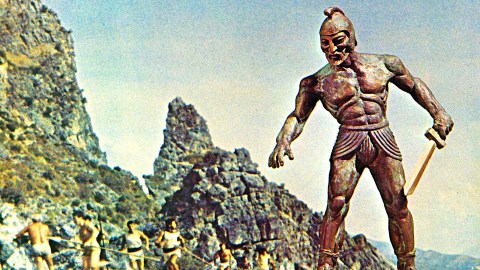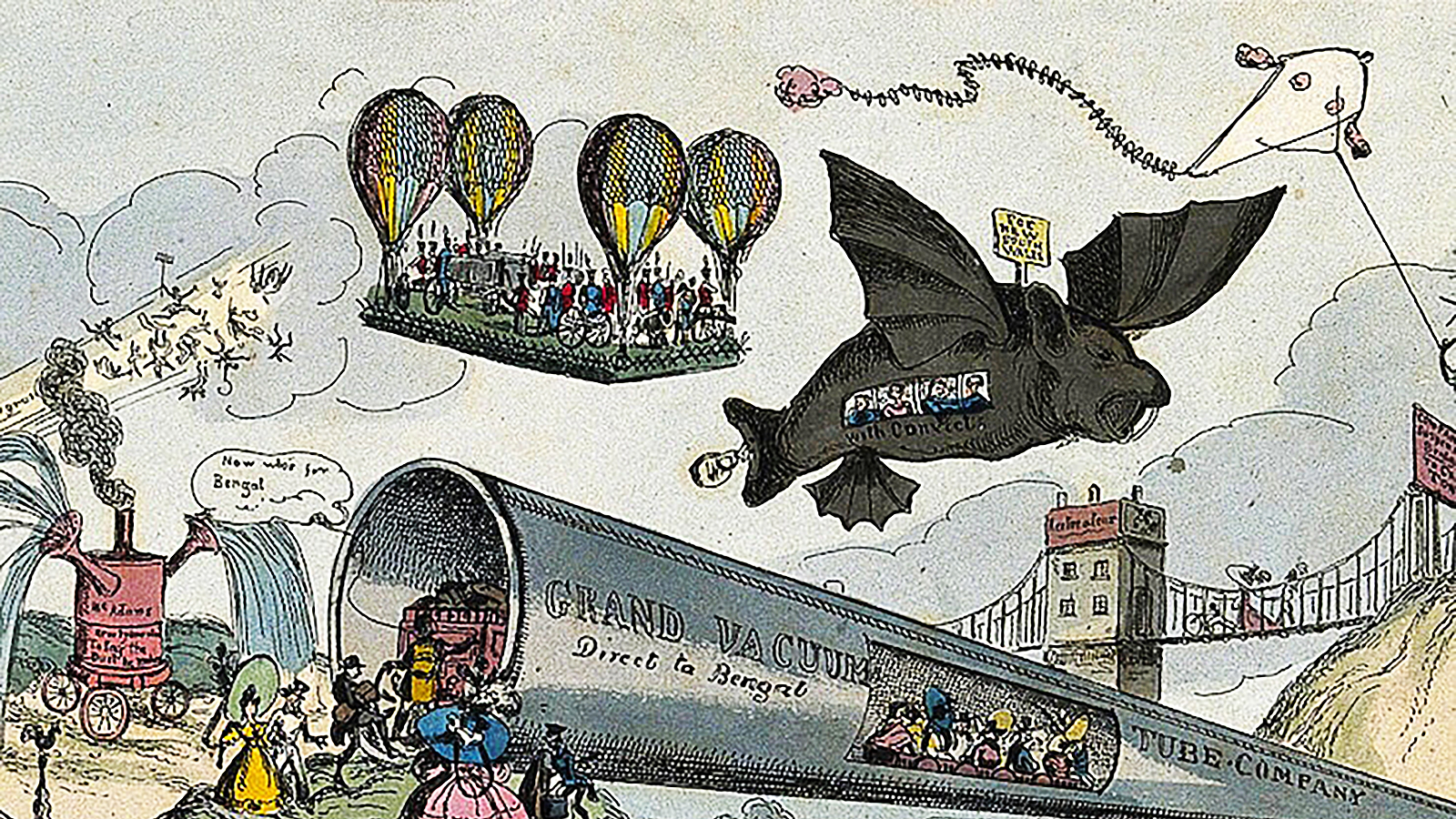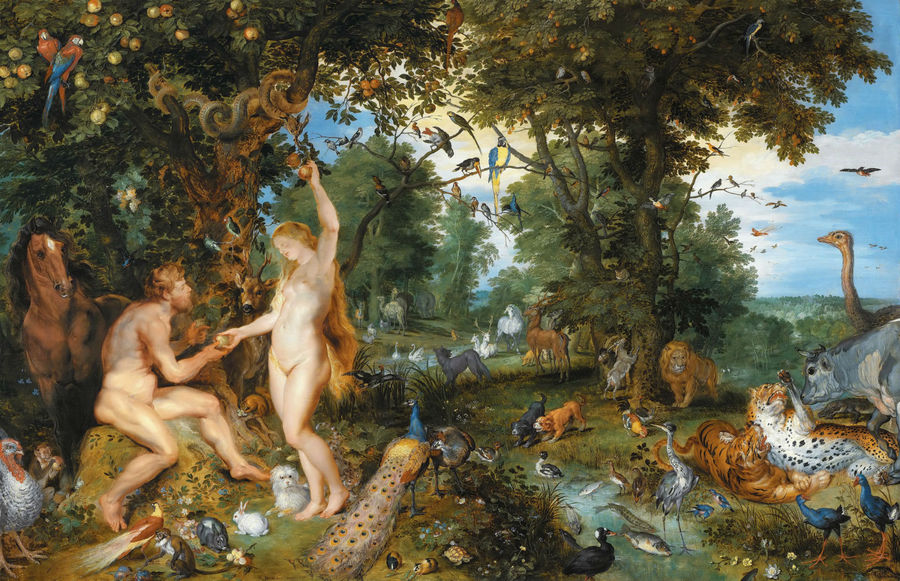Gods and robots

Columbia Pictures
A review of the recently released book, Gods and Robots: Myths, Machines, and Dreams of Ancient Technology, by Adrienne Mayor.
At the Great Dionysia, the festival of tragic plays that was held during the cool months of early spring about 500 BC, the Athenian playwright Euripides popularized a stage effect that is a dramatic gambit during the last scene of his Medea.
After the audience suffered through the bloody and horrifying tale of Medea slaughtering her children in revenge against her unfaithful husband Jason, Euripides introduced a new character whose role was to rectify all narrative uncertainties, to draw the entire play to a close. From somewhere behind or above the rugged stone stage of the theater, a technician would have used crane and lever, pulley and rope, to lower an actor wearing the gold ray-bedazzled mask of the sun-god Helios.
This man in the shape of a god would have been sitting in a dragon-shaped chariot and held aloft over the action of the play as if he’d suddenly descended from Olympus onto the theater stage. Sitting next to Helios was Medea, who is spirited away toward the West (perhaps by a series of ropes pulling the actors across the space of the theater). As the tragedy draws to an end, the Chorus intones “Gods often contradict/our fondest expectations./What we don’t expect/some god finds a way/to make it happen.” Or if a god doesn’t find a way, a machine does. Though Euripides didn’t invent it, he’d become most associated with this narrative trick, the descent of a god from the heavens with dramatic solution to the play, the ever-contested Deus ex machina, or “God from the machine.”
Divinity in wood and metal, lever and pulley, the Deus ex machina is an illustrative example of the ways in which humans have divinized technology, and though its mechanism wasn’t particularly complicated, it does dramatize the science fiction writer Arthur C. Clarke’s famed contention that any sufficiently advanced form of engineering is indistinguishable from magic.
Past books of Mayor’s have focused on subjects as diverse as how the ancient Greeks and American Indians interpreted fossil remains, the development of chemical weapons in the archaic Peloponnesus, and an important study of legends concerning the famed and fearsome Amazon warriors. In Gods and Robots, Mayor turns her attention to myths surrounding beings that are “made, not born.”
According to Mayor, myths such as that of the bronze automaton Talos, of the inventor Daedalus’ many famed creations, and of Pygmalion’s statue that transforms into a living woman, all constitute narratives of “life through craft,” or as she has termed it, of biotechne. In the author’s estimation, such imaginings of biotechne are mythic gestures toward the panoply of robotic types which populate our own stories, and increasingly our realities as well. Examining the myths of ancient Greece, Mayor sees not just gods, demigods, and Titans, but androids, cyborgs, fembots, automata, and robots as well. In our contemporary age where self-driving cars might as well be designed by the god of industry Hephaestus, or where Artificial Intelligence has been endowed with psyche by humanity’s creator Prometheus, Mayor argues that “ancient myths about artificial life can provide a context for … exponential development … and the looming practical and moral implications” of those innovations.
Rethinking familiar stories
Mayor provides an ingenious reinterpretation of familiar stories, reframing how we think about the numerous moving statues in Daedalus’ workshop, or of Pandora crafted by Prometheus, seeing in these tales the “earliest expressions of the timeless impulse to create artificial life.”
For example, the distinction between being “made, not born” is crucial in arguing how a being such as Talos, a bronze warrior whose veins pump with divine ichor, is viewed as a type of automaton, an archaic android (pictured at the top of this page). Explaining how the metal giant was “self-moving” and that he operated with a “power source that provides energy, ‘programmed’ to ‘sense’ its surroundings and possessing a kind of ‘intelligence’ or way of processing data to ‘decide’ to interact with the environment to perform actions or tasks,” it’s hard not to see Talos as being a robot.
Gods and Robots has as its central argument that we must distinguish between those beings that are made through magical intercession, as contrasted with those that are “manufactured products of technology, designed and constructed from scratch using the same materials and methods that human artisans used to make tools, artworks, buildings, and statues.” Not all of the examples are equally convincing—Prometheus’ molding of the first humans still seems pretty supernatural—but in her readings of fables from Talos to Daedalus’ animated statues at Rhodes, Mayor provides a compelling argument as to why the word “robot” should be added to the critical vocabulary that’s used to discuss Greek myths.
Gods and Robots is at its most compelling when Mayor marshals evidence from both ancient art and engineering to examine the ways in which the actual historical record may have influenced the myths at the center of Greek religion. A beautifully designed book, Gods and Robots provides rich illustration of the tremendously life-like sculpture which developed five centuries before the Common Era, and that may have provided inspiration for the stories of mechanical women and men brought to life by ancient engineers (indeed an incredible museum exhibit could be theoretically derived from Mayor’s compendium). She writes that the “archaic idea that statues … possessed agency has a deep history,” influenced in part by the “exceptionally lifelike figures and historical inventors [who] began to design self-moving devices.” Mayor hypothesizes that some “divine devices in myth might have arisen as metaphors for innovations in technology, while others may have been exaggerations of more modern counterparts in historical times.”
In legend, Daedalus may have crafted the whirring gears and buzzing sprockets of the statues that patrolled the cliffs of Rhodes and which the poet Pindar described in his Olympian as “animated figures/Adorning every public street … [that] seem to breathe in stone/Or move their marble feet,” but the sculptor Praxiteles actually made representations of women and men where sinew and tendon, muscle and fat emerged from cool inert marble with the warmth of human flesh. In myth, Hephaestus may have forged iron automata from his kiln, but in reality, engineers like Philo Mechanicus and Hero of Alexandria constructed “self-moving devices … statues with parts and hidden or internal mechanisms capable of movement, such as nodding, moving inset eyes, raising arms, [and] opening temple doors.” As with the Deus ex machina, dead matter was endowed with seeming life, so that Mayor can draw parallel between how the Greeks who worked in stone, metal, and wood are the forebearers to us moderns who operate rather in silicon.
A sublime pleasure of science is that for a modest investment in data, we can be rewarded with a tremendous return in conjecture. Despite that, Gods and Robots can rely a bit too much on “perhaps,” “maybe,” “sometimes,” “seemingly,” and “possibly.” There is a sense that Mayor subsumes too many stories under her schema, and when she writes that “it is important to resist the temptation to project modern motivations and assumptions about technology onto the ancient world,” it’s an unconvincing sentiment considering the entirety of Gods and Robots.
Ancient Greek automata
Regardless, Mayor has provided a crucial (and fascinating) contribution, especially if we reverse the formulation from her previous warning—we’re not imposing our views of technology onto the ancient Greeks, rather we’re inheriting theirs—as Mayor argues. The storytellers and craftsmen of ancient Greece envisioned automata before they built them, and when we construct our robots today (whether in factories or in our imaginations), the language which we use to describe them is borrowed from those that came thousands of years before us.
Mayor draws a connection between Talos slowly bleeding out and Hal-9000 powering down in Clarke’s 2001: A Space Odyssey; to that example could be added comparisons between the exoskeleton bedecked titular character of RoboCop and winged Icarus, or Pandora and the fembot of Ex Machina. We need not only look towards our fictions, for there is something of the oracular in Deep Blue, something even of Daedalus in a Roomba.
Mayor writes of the “tensions and gaps between imagination and actuality, representation and reality,” an issue that somewhat mirrors William Shakespeare’s problem comedy The Winter’s Tale, for it too ends with a god from the machine (at least in a manner). Shakespeare has a contrite Leontes, the King of Sicily (where perhaps not uncoincidentally Daedalus supposedly lived for a time), encounter a statue of his wife Hermione, whom he had had unjustly executed years before for an infidelity that she was innocent of. Standing before the sculpture of Hermione, a stunningly life-like representation of the murdered wife that perhaps called to mind those patrolling statues of Rhodes’ shores, Leontes mournfully intones “Still, methinks, /There is an air comes from her! What fine chisel/Could ever yet cut breath?”
Suddenly, in a dramatic turn every bit the narrative Deus ex machina that Helios arriving upon his chariot is, the statue of Hermione comes to life and embraces her husband, nullifying the murder which he committed long before. An ambiguity that has long troubled Shakespeare scholars, for was the statue of Hermione always her in disguise, the some-how surviving Queen hidden away within wood and plaster, or did some magic transform marble into flesh?
After reading Mayor, perhaps we should think of Hermione in a third way, as an Artificial Intelligence programmed with the consciousness of Hermione, encased within the body of a robot shaped as if it were a woman. Such robots (and their ancestors) have always existed in that uncanny valley between the inert and the living, the artificial and the natural, the human and the divine. They impart a sense of the wondrous, this feeling that in metal and silicon there is perhaps something of the transcendent as there was with a god from the machine emerging above an Athenian stage, or in a statue coming to life in a Sicilian workshop, or in any of the innumerable dreams and myths which animated both the classical and the contemporary mind.
Ed Simon is a staff writer for The Millions and an editor at Berfrois. He can be followed at his website or on Twitter. He is author of America and Other Fictions and Furnace of this World; or, 36 Observations about Goodness, both available from Zero Books.
The post Gods and Robots appeared first on ORBITER.





